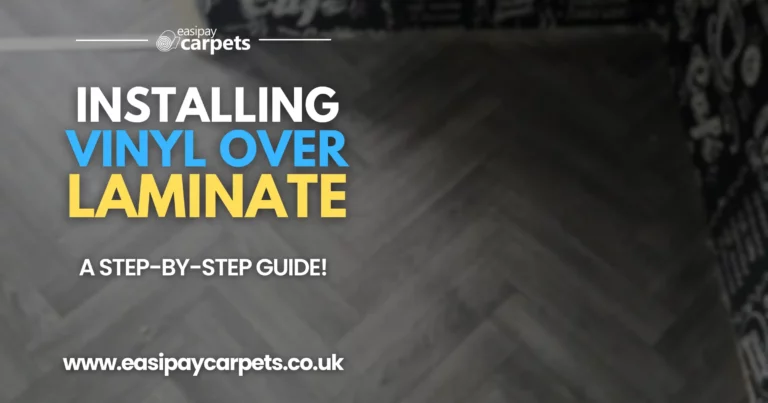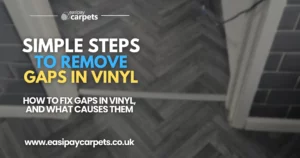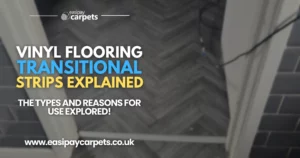

Vinyl Over Laminate Flooring: Everything You Need to Know
Can Vinyl Flooring Be Laid Over Laminate? How?
If you’re considering upgrading your floors, you might wonder whether vinyl flooring can be installed directly over existing laminate. The good news is that it’s possible, but there are important factors to consider to ensure the result is durable, safe, and visually appealing.
This guide will explore whether vinyl flooring can be laid over laminate, the preparation required, and step-by-step instructions to get it done right.
Can Vinyl Flooring Be Laid Over Laminate?
Yes, vinyl flooring can be installed over laminate flooring, but only under certain conditions. The laminate floor must meet the following criteria:
- Flat and Even Surface: Uneven or damaged laminate can affect the stability of the vinyl.
- Good Condition: The laminate must be intact, with no loose planks or significant damage.
- Clean and Dry: Dirt, dust, or moisture on the laminate can impact the vinyl’s adhesion or performance.
If the existing laminate is in poor condition, it’s better to remove it before installing vinyl flooring.
Considerations Before Installing Vinyl Over Laminate
Thickness of the Flooring
Installing vinyl over laminate increases the overall floor height, which can affect door clearances and transitions to other rooms. Measure carefully to ensure the added height won’t create issues.
Subfloor Stability
The subfloor beneath the laminate should be stable. If the laminate is floating (not glued or nailed down), it may move or shift, causing problems for the vinyl above it.
Moisture Resistance
If moisture is present, it can damage both the laminate and the vinyl. Address any dampness issues before proceeding.
Type of Vinyl Flooring
Different types of vinyl flooring, such as luxury vinyl planks (LVP), tiles, or sheet vinyl, may have specific installation requirements. Check the manufacturer’s guidelines to ensure compatibility.
Tools and Materials Needed
- Tape measure
- Utility knife
- Straight edge or T-square
- Underlayment (if required)
- Vinyl flooring planks, tiles, or sheets
- Adhesive (for glue-down vinyl)
- Cleaning supplies (broom, mop, or vacuum)
How to Lay Vinyl Flooring Over Laminate: Step-by-Step
Step 1: Assess the Laminate Flooring
Inspect the laminate flooring for damage, warping, or loose planks. Repair any imperfections or consider removing the laminate if it’s beyond repair.
Step 2: Clean the Surface
Thoroughly clean the laminate flooring to remove dust, debris, and grease. Use a mild cleaner and ensure the surface is completely dry before proceeding.
Step 3: Apply an Underlayment (If Needed)
While not always necessary, adding an underlayment can help level minor imperfections and improve soundproofing. Check the vinyl flooring manufacturer’s recommendations for underlay compatibility.
Step 4: Measure and Plan the Layout
Measure the room carefully and plan the layout of your vinyl flooring. For planks or tiles, stagger the joints for a natural look and stronger installation.
Step 5: Cut the Vinyl Flooring
Use a utility knife and straight edge to cut the vinyl flooring to fit around walls, corners, or other obstacles. Always double-check your measurements before cutting.
Step 6: Install the Vinyl Flooring
- Floating Vinyl Planks: Snap the planks together, ensuring a tight fit at the seams. Start from one corner of the room and work your way out.
- Glue-Down Vinyl: Apply adhesive evenly to the laminate surface and press the vinyl into place. Use a roller to ensure proper adhesion and eliminate air bubbles.
- Sheet Vinyl: Roll out the sheet, trim it to size, and secure it with adhesive or double-sided tape as per the manufacturer’s instructions.
Step 7: Seal the Edges
Use a sealant around the edges of the room to prevent moisture from seeping beneath the vinyl. This is especially important in kitchens, bathrooms, or other moisture-prone areas.
Step 8: Finish with Trim or Moulding
Reinstall baseboards, trim, or moulding to cover gaps between the vinyl flooring and walls. This gives the installation a polished, professional look.
Benefits of Installing Vinyl Over Laminate
- Saves Time and Effort: No need to remove the laminate, making the project quicker.
- Cost-Effective: Avoiding laminate removal reduces labour and waste disposal costs.
- Durable Upgrade: Vinyl flooring is waterproof, easy to clean, and highly durable, making it an excellent choice for high-traffic areas.
When to Avoid Laying Vinyl Over Laminate
- Damaged Laminate: If the laminate is warped, cracked, or uneven, it’s better to remove it.
- Floating Laminate: Floating laminate can shift or expand, causing instability for the vinyl.
- Moisture Issues: If moisture is present, address the root cause before installation.
Conclusion
Vinyl flooring can be laid over laminate flooring, provided the existing surface is flat, stable, and in good condition. With proper preparation and installation techniques, you can achieve a smooth, durable, and attractive finish. However, if the laminate flooring is damaged or unstable, it’s best to remove it and start fresh with the subfloor. By following these steps and tips, your DIY project will result in beautiful, long-lasting flooring.
Easipay Carpets can help you get brand new flooring without the high up-front cost – by simply letting you spread the cost of the flooring over time instead. There’s no interest on our plans so you aren’t spending a penny more than you would buying it outright and we include underlay, door trims, carpet grippers and laminate beading for free. Prices start from just £10 per week!
It starts with a free home appointment and quote, to get booked in at a time that suits you, tap the “Get Started” button below and fill out the contact form!
Still Got Questions? Here's 10 FAQs!
It’s not recommended, as floating laminate may shift, causing instability for the vinyl.
Not always, but an underlayment can help level minor imperfections and provide extra cushioning.
Yes, but the laminate must be clean, flat, and securely attached to the subfloor.
Luxury vinyl planks (LVP) or tiles are ideal for their ease of installation and durability.
Yes, the combined thickness of the laminate and vinyl will raise the floor height, which may require adjustments to doors and transitions.
No, warped or uneven laminate should be repaired or removed to ensure a stable base.
Use a moisture barrier and dehumidifier to dry out the area, or consider removing the laminate if it’s been compromised.
Yes, vinyl is more water-resistant and easier to clean, making it a low-maintenance option.
It’s recommended to remove baseboards for a cleaner installation and reinstall them after the vinyl is laid.
Depending on room size and complexity, most installations can be completed in a day or two.




